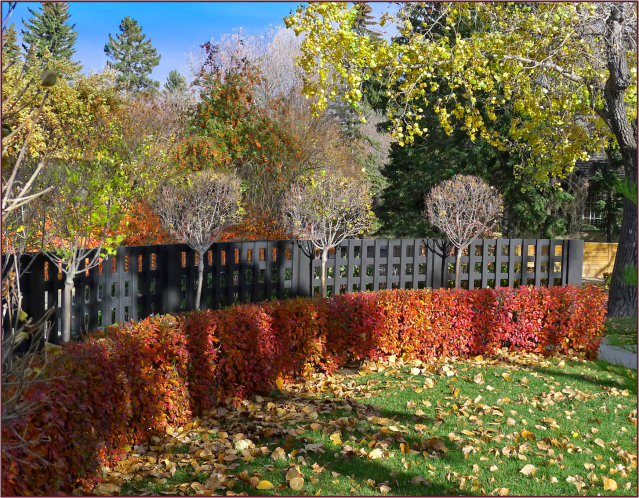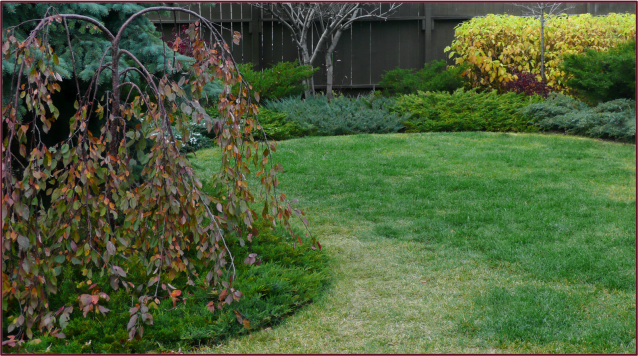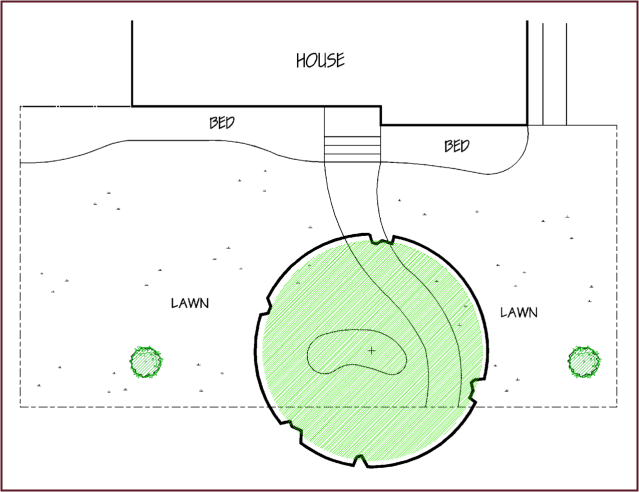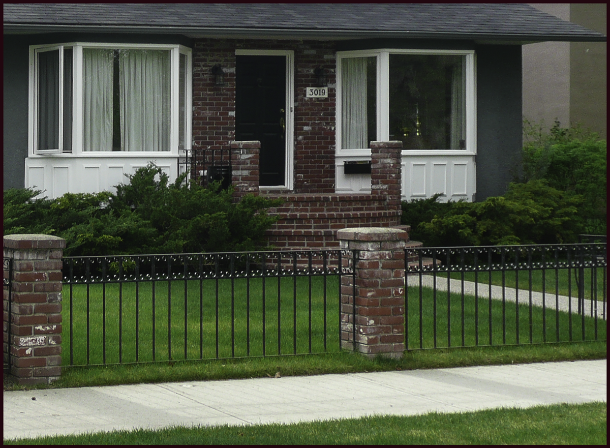Happy New Year fellow gardeners! It’s a week or two into 2014 and I’d like to bid a fond farewell to 2013. Let me rephrase that. I’m so glad to see the arse-end of the year 2013!
It wasn’t my finest year.
Like many of you, I made some New Year’s Resolutions. Most are pretty straightforward; return to healthier eating, lose some weight, get more exercise, spend less time in front of my computer screen, blah, blah, blah. Challenging as it may be to abide by such resolutions, if I can commit to them for even a few weeks, perhaps these lifestyle changes will become re-established in my daily repertoire of healthy behaviours – they say it takes only 21 days to form a habit.
However, not all of my avowed changes are quite so straightforward; be more organized, procrastinate less; qualities that just aren’t part of my make-up – supposedly one can learn though. I’ve also decided that from now on I will try to think before speaking. Yikes! How does one possibly remember to catch oneself each time the mouth opens to speak; to always first consider: is what I’m about to say necessary, or useful? Will I come on too strong, or too loud, is this a “think” or a “say”, will I be oversharing or heaven forbid, repeating myself?
I was advised once, by a well-meaning person of course, that I have an annoying habit of repeating myself. Not entirely untrue I guess. In my defense though, experience has taught me that some people need to hear things several times before they get it. And as a design instructor and lecturer I also know that some things merit repeating – whether within the same address or at a later date as a review. It’s what good teachers do. For example, since this blog’s inception I have thrown oodles of design advice at you – do you remember all of it? Not likely. Do you remember exactly where to find whatever information you might want to revisit? Probably not. Repeating myself would be helpful here no? Perhaps a review to help you navigate both the design process and this site – all my design advice in a tidy little bundle with links to the applicable posts where you’ll find the information you seek.
You’re welcome! It’s what good teachers do.
Design Process and Principles – A Review
The Process
The first thing I want to reiterate, and this can’t be overstated, is that design is primarily about organizing and arranging space, not plants. The same way a house must first be properly designed and built before it can be furnished, so the outline of a garden or landscape must first be planned before plants are considered. The functionality of any given space should be the designer’s chief concern, followed by its form – hence the designer’s mantra “form follows function”. The design process then, looks like this (click on the red text to go to corresponding post):
Phase 1 – FUNCTIONAL DRAWINGS: one must first determine what one want or needs; for example, garden beds, a deck or patio, walkway, lawn, fireplace etc., and then decide where each will be situated. Various possible locations for each element can be explored before deciding on the best placement for your particular needs.
Phase 2 – CONCEPT DRAWINGS: once you know what you want and where you want it, you can give form to your garden beds, patio, walkway and other garden elements. Remember your design concept can consist of:
- Straight Lines (Rectilinear Form, Angular Form)
- Combination of Straight and Curving lines (Arc and Tangent Form)
- Curving Lines Curvilinear Form, Circular Form
As you play with various design lines, there are some Key Things to Remember:
- Maintain Continuity
- Avoid acute angles
- Use design lines to guide planting
Phase 3 – Planting Plan: when your landscape or garden outline has been conceptualized, plants can then be considered. However, before one can effectively arrange plant material, some governing principles must first be understood – we’ll return to the Planting Plan later.
The Guiding Principles
Although designing a garden or landscape requires both creativity and knowledge, anybody can learn how to improve their own gardens with the help of a few guidelines or Design Principles. These principles, as applied to landscape design are:
- UNITY – a sense of oneness and harmony in the garden, achieved through:
- Repetition – repeating elements throughout a composition.
- Dominance – one element or group of elements is given emphasis
- Unity of Three – arranging elements in groups of three (or odd numbers)
- Interconnection – physically connecting all landscape spaces
- BALANCE – perceived equilibrium in a garden or landscape composition. Balance can be Symmetrical or Asymmetrical.
- MOVEMENT – visual motion throughout a composition
- SCALE – size of landscape elements in relation to their surroundings
- PROPORTION – size of landscape elements in relation to each other
The Planting Plan Revisited
With a rudimentary understanding of design principles you’ll now be in a better position to choose and arrange plant material, but there are still procedural steps to follow:
- FUNCTION – determine if there are functional roles like shade or privacy that you need plants to play.
- AESTHETICS – plants provide visual appeal from their physical traits:
- Colour
- Gardeners looove colour don’t we? I have touched only lightly on the effective use of colour in the garden. Colour theory is a big topic and I’m still trying to decide how I want to approach it – how much information will be enough, without being too much (see I’m already adhering to one of my resolutions; I’m thinking before speaking, er writing).
Well my friends that wraps up my review – a little New Year’s gift for you. Keep this post handy for future reference – design advice is just a click away.
You’re welcome! It’s what good teachers do.
Yours, Sue

 In addition each rectangle is in itself proportioned such that the shorter dimension is two-thirds the length of the longer one. The result is a design with very pleasing proportions.
In addition each rectangle is in itself proportioned such that the shorter dimension is two-thirds the length of the longer one. The result is a design with very pleasing proportions.








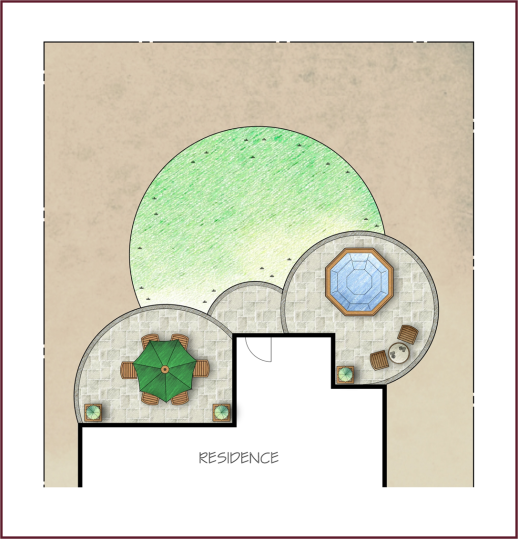

 In the examples to the left, the top image illustrates a house that is visually overwhelmed by the landscaping – the shrubs next to the house are as tall, or taller than the house, with some even obscuring windows. And the shade trees are huge in relation to the house – this scale is too large. The middle example is the exact opposite. The trees and shrubs look like toys in comparison to the house – the scale of this landscape is too small. The bottom example is what we’re after. The landscape elements are well suited to the size of the house, hence this represents appropriate scale.
In the examples to the left, the top image illustrates a house that is visually overwhelmed by the landscaping – the shrubs next to the house are as tall, or taller than the house, with some even obscuring windows. And the shade trees are huge in relation to the house – this scale is too large. The middle example is the exact opposite. The trees and shrubs look like toys in comparison to the house – the scale of this landscape is too small. The bottom example is what we’re after. The landscape elements are well suited to the size of the house, hence this represents appropriate scale.



 The other thing that happens is illustrated on the left. In the top example, the diorama represents an older home with plantings typical of the time it was built – Cotoneaster hedge, Potentilla, and little Johnny’s ‘Arbour Day’ tree, a Colorado spruce (Picea pungens). Not particularly inspired I realize, but at least it’s in scale with the house. Fast forward a few decades and the scenario depicted in the bottom photo has likely ensued. Little Johnny is forty years old now and so is this landscape. I guess nobody took into account way back when, that living things don’t remain static. They grow … and grow and grow. So what was once in scale is no longer.
The other thing that happens is illustrated on the left. In the top example, the diorama represents an older home with plantings typical of the time it was built – Cotoneaster hedge, Potentilla, and little Johnny’s ‘Arbour Day’ tree, a Colorado spruce (Picea pungens). Not particularly inspired I realize, but at least it’s in scale with the house. Fast forward a few decades and the scenario depicted in the bottom photo has likely ensued. Little Johnny is forty years old now and so is this landscape. I guess nobody took into account way back when, that living things don’t remain static. They grow … and grow and grow. So what was once in scale is no longer.
